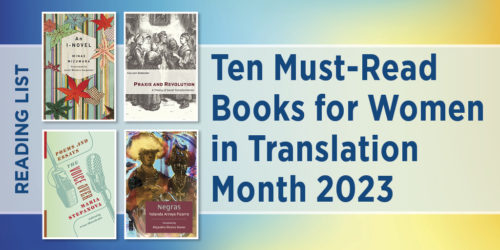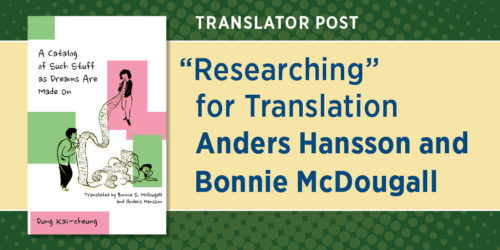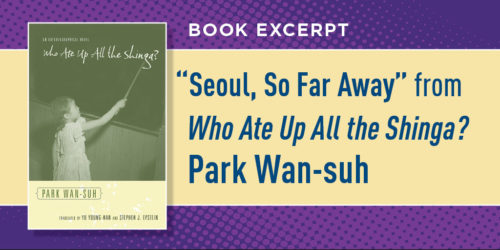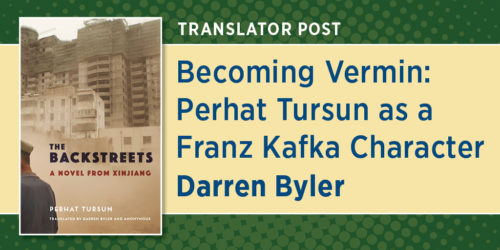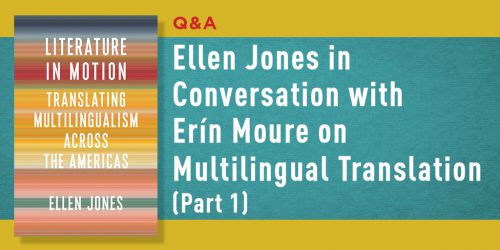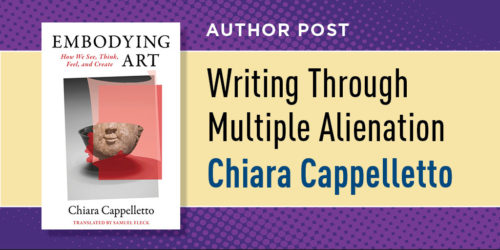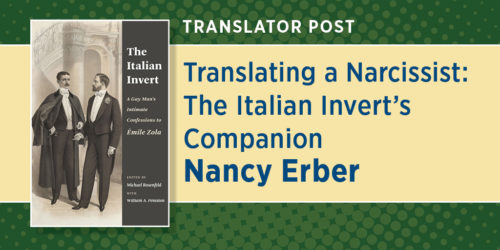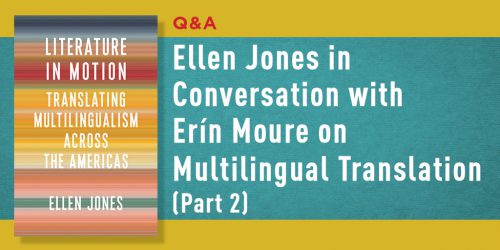Translation and the Writing Classroom Marie Satya McDonough

Although I am both a teacher and a translator, I do not teach translation. In fact, the person in my family who knows about translation, who has an actual degree in translation—my brother—works in a vineyard, while those of us who translate—my mother and I—have devoted the majority of our working lives to other occupations. My own principal professional focus is first-year college writing; the topics I’ve chosen for my courses reflect my disciplinary expertise in Indigenous studies, contemporary literature, and gender and sexuality studies rather than my experience as a translator. Yet the more I translate, the more aware I become of the ways in which translation informs my pedagogical approach, and vice versa.
In the last few years, I’ve grown much more sharply attuned to the fact that linguistic styles–for lack of a better term–too, are governed by conventions. We stress genre awareness in college writing: an argumentative essay is made up of a bunch of standard rhetorical moves, much like a mystery novel or a restaurant menu. Learning these conventions allows us make ourselves intelligible to our readers; it helps them find the information they’re looking for, and it signals that we belong to a shared community of meaning. Once we know the conventions, we can flout them strategically. My understanding that languages, too, have their own conventions—not only grammatical ones but those related to style, to a typical “feel” or rhythm—was intuitive until my translation practice made it explicit. Take something as basic as the size of a sentence: the Romance language writers I edit (in English) and translate (to English) have an affinity for gorgeous, paragraph-length sentences. It is, of course, possible to write long sentences in English that are both elegant and syntactically sound—think Faulkner or Henry James, if he’s your cup of tea—but, as a rule, English prefers shorter sentences. Translating academic, rather than literary, texts well often means turning one French sentence into two or even three English ones. Developing a vocabulary to describe these often-inchoate and usually unspoken characteristics has been an unexpected boon of my translation practice.
What does it even mean to sound like yourself in a different language?
In turn, it has been tremendously useful to be able to name these implicit preferences to my students. At Boston University, where I teach, students whose primary language is not English make up a large proportion of our first-year writing cohort. Translating gives me tools to explain that although something they wrote might not be wrong (that is, grammatically “incorrect”), it may still feel confusing or off-putting for their audiences. In the case of very long sentences, for example, readers expecting English’s characteristically shorter, more direct prose might get lost. I am also able to talk to my students about consciously choosing to keep those long sentences–or some of them, at least–as well as other linguistic idiosyncrasies that they might be importing from their mother tongue. What do they want their writerly voice to sound like? Indeed, these are the judgment calls that translators make all the time: to what extent should this author sound like they were born and raised speaking the dominant standard of American English, and to what extent should they sound like “themselves”? What does it even mean to sound like yourself in a different language? Luckily, both as a teacher and as a translator, I work with living authors almost all the time, so these are decisions we can make in conversation.
This dialogic approach opens onto another dimension of my teaching that has been shaped by my translation practice: learning to meet students where they are. With the exception, perhaps, of noting obvious errors, translation is not editing: my job isn’t to improve infelicitous paragraphs or repetitive sections, but rather to convey what the author wrote in another language. Conversely, when I teach writing, it is my job to identify areas for improvement; but translation has helped me put the brakes on my urge to correct. I’m better able to pause and take stock: what is this writer trying to accomplish? What are their goals for their writing? Translation is a kind of midwifing of a text into another language. When I am both translating and teaching, I remember that good teaching is also about becoming a kind of midwife of my students’ work—being able to understand their vision for their writing and to help them make that vision a reality, rather than imposing my own vision of what their writing should be.
…my job isn’t to improve infelicitous paragraphs or repetitive sections, but rather to convey what the author wrote in another language.
In that sense, translation work goes arm in arm with the DEI frameworks that we are standardizing in my program and that are being widely adopted in all kinds of classrooms. Inclusive and equitable teaching emphasizes seeing students as partners rather than as adversaries; it stresses collaboration, mutual respect, and trust. To create an equitable classroom, I have to value the unique skill set and perspective that each student brings—thus to practice a certain kind of humility about the limits of my role. Of course, my job has an evaluative aspect (although my turn toward ungrading has greatly curtailed it), and the power dynamic of the classroom is different from that of the page or the Zoom meeting. Still, translation has helped me better understand my role as a writing teacher as concerned less with judgment and more with shepherding and guidance, helping students become maximally confident and empowered as writers.
Although the cliché about writing–that it’s solitary work–is not entirely false, my own practice privileges writing as a space of collaborative encounter, discovery, and growth fueled by complementarity. I feel lucky that in both my teaching and translation, writing has figured as a space of such rich exchange.
Marie Satya McDonough is a Senior Lecturer in the College of Arts and Sciences Writing Program and the Women’s, Gender, and Sexuality Studies Program at Boston University. She is the translator for Young Foucault: The Lille Manuscripts on Psychopathology, Phenomenology, and Anthropology, 1952–1955.

